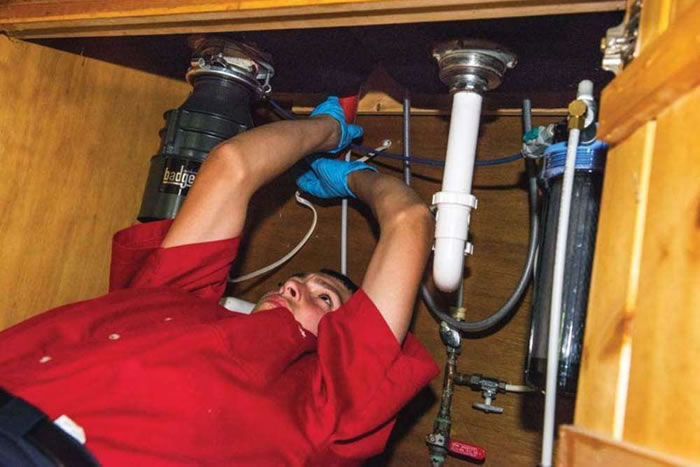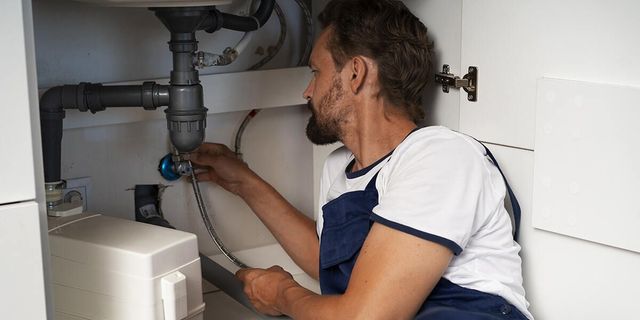The writer is making a number of good pointers relating to Dealing with Low Water Pressure in Your Home in general in this article down the page.

Low tide stress in your home can be a discouraging problem, influencing whatever from bathing to washing meals. If you're experiencing weak water flow, there are a number of feasible causes and services to discover. In this guide, we'll talk about usual factors for low tide pressure and useful actions to resolve the issue efficiently.
Intro to Low Tide Stress
Low tide stress occurs when the flow of water from your faucets, showers, and other components is weak than common. This can make everyday tasks more tough and less effective. Understanding the sources of low water stress is important to locating the right solution.
Common Reasons For Low Water Stress
Pipeline Obstructions
In time, pipes can end up being obstructed with natural resource, sediment, or particles, limiting the flow of water. This is an usual problem in older homes with galvanized steel pipelines.
Corrosion
Rust within pipes can bring about leaks and reduced water stress. Corrosion accumulation can tighten water flow, specifically in aging plumbing systems.
Faulty Stress Regulators
Pressure regulatory authorities are accountable for keeping consistent water pressure in your house. If they malfunction, it can cause low water pressure or unequal circulation throughout your house.
Municipal Water System Issues
Sometimes, the problem lies outside your home. Local water system concerns, such as main line leakages or upkeep job, can momentarily lower water stress in your location.
Just How to Identify Low Water Pressure
Checking Faucets and Components
Beginning by evaluating the water stress at different taps and fixtures throughout your home. If the concern is isolated to particular areas, it may show localized problems.
Evaluating Pipes
Inspect visible pipelines for indicators of leaks, deterioration, or blockages. Take notice of any type of unusual noises, such as knocking or rattling pipes, which can suggest concerns within the plumbing system.
Consulting with a Plumber
If you're not able to determine the reason for low water pressure, consider hiring a professional plumber to perform a detailed evaluation. They can determine underlying concerns and advise appropriate services.
Do It Yourself Solutions to Deal With Low Tide Pressure
Cleaning Aerators and Showerheads
Mineral deposits can build up in aerators and showerheads, minimizing water circulation. Eliminate and clean up these elements consistently to boost water stress.
Flushing Water Heater
Sediment buildup in the water heater can limit circulation and decrease performance. Purging the storage tank regularly helps get rid of sediment and maintain ideal efficiency.
Checking Pressure Regulatory Authority
Make certain that the pressure regulatory authority is operating correctly. Adjusting or changing the regulatory authority can help recover correct water pressure throughout your home.
Clearing Clogs in Pipes
For small blockages, attempt making use of a plumbing serpent or chemical drainpipe cleaner to clear obstructions in pipelines. Beware when using chemicals and adhere to security guidelines.
When to Call a Specialist Plumber
If do it yourself efforts stop working to resolve the issue or if you presume substantial plumbing troubles, it's ideal to look for assistance from an accredited plumber. They have the proficiency and tools to deal with complex issues safely and efficiently.
Preventive Measures to Maintain Water Stress
Normal Upkeep
Set up routine maintenance for your plumbing system to prevent concerns such as deterioration, leaks, and clogs. Addressing small issues early can help stay clear of more significant fixings in the future.
Installing a Stress Booster
Think about mounting a pressure booster pump to improve water pressure in areas with consistently low circulation. This can be specifically advantageous for multi-story homes or buildings with high-demand fixtures.
Monitoring Water Usage
Be mindful of water usage habits and avoid overtaxing the plumbing system. Basic adjustments, such as astonishing showers and laundry loads, can aid keep adequate water pressure.
Final thought
Handling low tide pressure can be irritating, yet determining the underlying causes and implementing suitable options can recover optimum circulation throughout your home. Whether it's cleaning up aerators, checking pipes, or talking to a plumber, taking positive steps can ensure a constant supply of water for your everyday needs.
How to Fix Low Water Pressure In Your Home
Municipal Water Supply Issues
Scheduled maintenance, high demand, and water main breaks are all potential causes for low water pressure within a city or county’s water lines. While there’s not much you can do to personally fix a problem with your city or county’s water supply system, you can play a big role in documenting the issue and alerting those who can.
How to fix it:
Ask your neighbors if they are experiencing any issues with low water pressure. If multiple homes are affected, it’s likely related to the city’s water line.
Contact the local Water Authority to see if there is any maintenance taking place that might be affecting your supply. Also let them know of your specific issues. If other homeowners report the same issues, they’ll know that there could be a larger issue to look into.
Faulty Fixtures
A damaged or clogged shower head, faucet or appliance is the first thing we’d suggest checking, especially if low water pressure appears to be isolated to a specific area of your home.
How to fix it:
First, turn off the main water supply to your home.
Check the affected appliances for build-up or debris. In the case of a faucet, you can simply unscrew the aerator at the tip of the faucet. Showerheads should be fully detached from the water pipe.
While the appliances are detached, you may want to check the water supply to determine if the fixtures were in fact the issue.
To clean, soak the showerhead or aerator in vinegar and brush off any visible debris.
Reattach the fixtures and check the water pressure again. If it is still low, there is likely a deeper issue at hand, which can be determined by a professional plumber.
Pipe Obstructions
Mineral deposits, rust or other debris within water pipes can lead to blockages or corrosion over time.
How to fix it:
When you think of a clog, you probably think of a drain clog. While there are many DIY solutions to clearing a drain, clogs in a water pipe will almost always require the help of a professional plumber. A plumber will be able to locate the affected pipe and clean out any debris or mineral deposit buildup. In severe cases, the pipe may need to be replaced. Your plumber might also recommend a water softening system to remove the minerals from your home’s water supply that can contribute to pipe blockages over time.
Plumbing Leak
Undetected water line leaks can divert water away from your residential pipes, reducing the water pressure in your fixtures.
How to fix it:
Check your water meter by turning off all water sources and monitoring the meter for any movement, which could be a clear indicator of a potential leak.
Check all visible pipes for signs of leaking, including water stains, active dripping or damp spots around the pipe.
Inspect fixtures, including faucets and showerheads, for any drips.
Test the pressure but recording the pressure with the main water valve shut off. Leave off for a few hours and test again. A significant drop in pressure is a clear sign of a leak.
https://kiddcoplumbing.com/plumbing-blog/how-to-fix-low-water-pressure/

How to Fix Low Water Pressure In Your Home
Municipal Water Supply Issues
Scheduled maintenance, high demand, and water main breaks are all potential causes for low water pressure within a city or county’s water lines. While there’s not much you can do to personally fix a problem with your city or county’s water supply system, you can play a big role in documenting the issue and alerting those who can.
How to fix it:
Faulty Fixtures
A damaged or clogged shower head, faucet or appliance is the first thing we’d suggest checking, especially if low water pressure appears to be isolated to a specific area of your home.
How to fix it:
Pipe Obstructions
Mineral deposits, rust or other debris within water pipes can lead to blockages or corrosion over time.
How to fix it:
When you think of a clog, you probably think of a drain clog. While there are many DIY solutions to clearing a drain, clogs in a water pipe will almost always require the help of a professional plumber. A plumber will be able to locate the affected pipe and clean out any debris or mineral deposit buildup. In severe cases, the pipe may need to be replaced. Your plumber might also recommend a water softening system to remove the minerals from your home’s water supply that can contribute to pipe blockages over time.
Plumbing Leak
Undetected water line leaks can divert water away from your residential pipes, reducing the water pressure in your fixtures.
How to fix it:
https://kiddcoplumbing.com/plumbing-blog/how-to-fix-low-water-pressure/
We are very excited about 4 Ways to Troubleshoot Low Water Pressure and I am hoping you liked the blog post. Don't hesitate to pause to promote this blog post if you appreciated it. We truly appreciate your readership.
Call Today